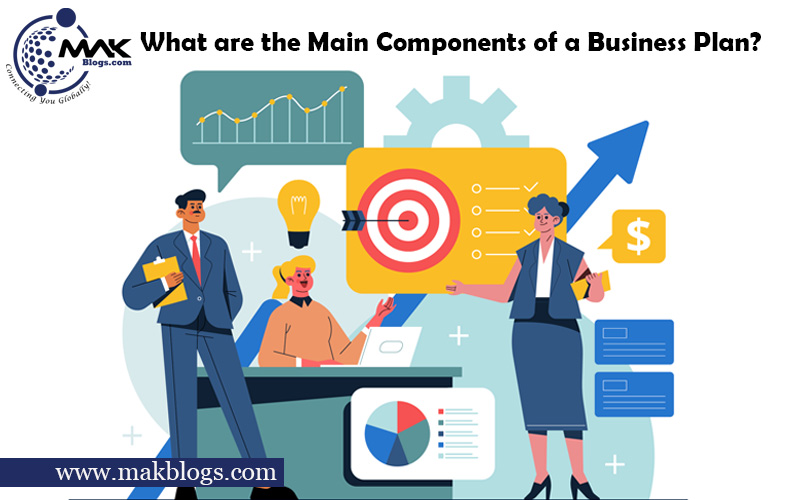If you’re looking to attract investors, secure funding, or simply ensure the success of your business, a solid business plan is a must-have. But what elements should you include in that plan? In this post, we’ll answer the question, ‘What are the main components of a business plan?’ and provide guidance for creating a plan that works for your unique needs.
A business plan is an essential written report that outlines the goals and tactics to accomplish success in a business. It is a comprehensive roadmap that guides entrepreneurs and business owners through every stage of the business, from inception to growth and expansion. In the following write-up, we will look at the fundamental elements of a business plan and elaborate on their significance in any commercial enterprise. So, let’s delve deeper and gain further insights into this essential element of business planning.
Table of Contents
ToggleWhat Are the Main Components of a Business Plan?
The Main Components of a Business Plan include:
Executive Summary
The Executive Summary holds immense significance as one of the main components of a business plan. It serves as a concise overview of the entire plan and is typically the initial section that potential investors or lenders explore. A skillfully crafted Executive Summary addressing “what are the main components of a business plan” can captivate readers and entice them to delve deeper into the plan, fostering their consideration for investment opportunities in the business.
Consider the following essential factors while crafting an Executive Summary:
- Keep it Brief: The Executive Summary should be at most two pages long. This means you must be concise and focus on the most essential information.
- Provide an Overview of the Business: The Executive Summary should begin with a brief overview, including the name, location, products or services offered, and target market.
- Highlight the Problem or Opportunity: The Executive Summary should explain why the business is needed or what opportunity it is addressing. This could include a problem in the market that the business is solving or a gap in the market that the business is filling.
- Outline the Business Model: When considering “what are the main components of a business plan,” it is crucial to include the Business Model section. The Executive Summary should explain how the business plans to generate revenue, including the pricing strategy, sales, and distribution channels.
- Provide Financial Projections: The Executive Summary should include a summary of the financial projections for the business, including revenue, expenses, and profits. This will give investors or lenders an idea of the potential return on their investment.
- Highlight the Management Team: When considering “what are the main components of a business plan,” it is crucial to highlight the Management Team. The Executive Summary should introduce the management team and highlight their relevant experience and skills. This will give investors or lenders confidence in the ability of the team to execute the business plan.
- End with a Call to Action: The Executive Summary should end with a call to action, encouraging investors or lenders to read the entire business plan and consider investing in the business.
Company Description

While learning “what are the main components of a business plan,” the Company Description section of a business plan is where you provide an overview of your company and its goals. This section should give potential investors and partners a clear understanding of your business, including what it does, how it operates, and what sets it apart from competitors.
Below are some essential components to include in your Company Description:
- Business Concept: Start by providing a brief overview of your business concept. Explain what your company does, its products or services, and what differentiates it from competitors.
- Mission Statement: Your mission statement should summarize your company’s purpose and goals. This should be a brief statement that encapsulates your company’s values and objectives.
- Legal Structure: Describe the legal structure of your business, such as whether it’s a sole proprietorship, partnership, LLC, or corporation. Also, include information about ownership, such as the names and roles of your key executives and partners.
- Industry Analysis: When exploring “what are the main components of a business plan,” the Industry Analysis holds paramount importance. Conduct a thorough industry analysis, including trends, competitors, and market size. Use this information to provide context for your business and explain how you plan to compete in the market.
- Target Market: Identify your target market, including demographics, behaviors, and needs. Explain how your business meets the needs of your target market and why they will choose your company over competitors.
- Marketing and Sales Strategy: One of the key components when considering “what are the main components of a business plan” is the Marketing and Sales Strategy. Describe how you plan to market and sell your products or services. Include information on your pricing strategy, distribution channels, and advertising efforts.
- Financial Information: Provide a summary of your financial information, including your current financial situation and projections for the future. This can include revenue, expenses, profits, and cash flow information.
- Future Goals: Finally, outline your long-term goals for the company, including milestones and growth projections. This will help potential investors and partners understand where you see the company heading.
Market Analysis
While examining “what are the main components of a business plan,” market analysis is a crucial business plan component that assesses the demand and supply for the proposed product or service. It helps identify the target market, competition, and potential growth opportunities.
Here are some key points to include when discussing market analysis in a business plan:
- Industry Overview: Provide an overview of the industry, including its size, growth potential, and key players. This information can be obtained from industry reports and market research.
- Target Market: Identify the target market, including its demographics, needs, and behavior. Data regarding the market can be collected through various means, such as conducting surveys, organizing focus groups, and utilizing other market research methods.
- Competition: While learning “what are the main components of a business plan,” the Competition section holds great significance. Analyze the competition, including their strengths and weaknesses, market share, pricing, and marketing strategies. This information can be obtained through research and analysis of competitor’s websites, product reviews, and social media presence.
- Marketing and Sales Strategy: Outline the marketing and sales strategy, including pricing, promotion, and distribution channels. This section should also include a sales forecast that estimates the expected revenue and growth.
- Market Trends: When exploring “what are the main components of a business plan,” it is crucial to address market trends. Identify the current and future trends that may impact the market and the proposed product or service. This could include changes in technology, consumer behavior, or government regulations.
- SWOT Analysis: Conduct a SWOT analysis to identify the company’s strengths, weaknesses, opportunities, and threats. This analysis can help identify market areas the company can capitalize on and potential challenges to address.
Products or Services


When analyzing “what are the main components of a business plan,” when creating a business plan, it is essential to clearly define the products or services that the company will offer. This plan section should outline what the company will sell and how it will differentiate itself from competitors.
Below are some key aspects to keep in mind when discussing the products or services in a business plan:
- Description: Provide a detailed description of the products or services that the company will offer. This should include information such as the features and benefits of the products or services, how they will be produced or delivered, and any unique selling points that will set them apart from competitors.
- Target Market: Identify the target market for the products or services. This should include information such as demographic and psychographic characteristics of the target audience, as well as any market research conducted to support the viability of the product or service.
- Competitive Advantage: When considering “what are the main components of a business plan,” the Competitive Advantage section plays a significant role. Explain how the products or services will stand out and provide a competitive advantage. This can include information about unique features, pricing strategies, or marketing efforts that will differentiate the products or services from others in the market.
- Intellectual Property: If applicable, provide information about any intellectual property associated with the products or services, such as patents, trademarks, or copyrights.
- Development and Production: Outline the steps that will be taken to develop and produce the products or services. This should include information about any suppliers or vendors that will be used and any costs associated with development and production.
- Future Products or Services: If the company plans to expand its offerings, provide information about the types of products or services that will be developed and how they will be introduced to the market.
Marketing and Sales Strategy
Furthermore, in the discussion of what are the main components of a business plan? Let’s get to know more. Marketing and Sales Strategy is an essential component of a business plan that outlines how a company plans to promote and sell its products or services. It includes details on target customers, pricing, advertising, and sales channels.
Here are some critical considerations to bear in mind when creating the Marketing and Sales Strategy segment of your business plan:
- Target Market: Define your ideal customer and describe their demographic, geographic, and psychographic characteristics.
- Competitive Analysis: Identify your main competitors and analyze their strengths and weaknesses. Highlight how your product or service differs from theirs.
- Pricing Strategy: Outline how you will set prices for your products or services. Include details on any discounts, promotions, or bundling strategies you plan to use.
- Promotion and Advertising: When exploring “what are the main components of a business plan,” the Promotion and Advertising section emerges as a vital aspect. Describe how you plan to promote your products or services to your target customers. Include details on your advertising channels, such as social media, email marketing, print ads, and other methods.
- Sales Channels: Detail how you distribute and sell your products or services. This can include direct sales, partnerships, online marketplaces, or other channels.
- Sales Forecast: Estimate your sales for the first few years of your business based on your target market, pricing strategy, and sales channels.
- Marketing Budget: Outline how much you plan to spend on marketing and advertising to achieve your sales goals.
- Customer Relationship Management: Detail how you plan to manage and maintain customer relationships, including customer service and retention strategies.
Financial Projections


When contemplating “what are the main components of a business plan,” financial projections are an essential component of a business plan that provides an estimate of the company’s financial performance in the future. This section includes details about the financial aspects of the business, such as revenue, expenses, profits, and cash flow. It is typically presented as a set of financial statements, including income statements, balance sheets, and cash flow statements.
Here are some essential components to incorporate in the financial projections section:
- Revenue Forecast: Revenue Forecast includes estimates of the company’s expected sales for three to five years. The revenue forecast should be based on realistic assumptions about the market and the company’s ability to capture market share.
- Expenses: This section should detail all the expenses the company expects to incur to operate the business. This may include materials, labor, marketing, rent, and other overhead expenses.
- Profit and Loss Statement: When considering “what are the main components of a business plan,” the Profit and Loss Statement stands out as a critical element. This statement shows the company’s projected revenue and expenses and calculates each year’s net profit or loss. It is essential to project realistic revenue and expense figures and to carefully consider factors that could impact the company’s profitability.
- Cash Flow Statement: This statement shows the amount of cash the company expects to generate or use yearly. It is essential to project cash flow accurately, as cash flow problems can quickly sink a business.
- Break-Even Analysis: This analysis calculates the revenue the company needs to generate to cover its expenses. Tracking this metric is crucial as it can provide valuable insights into the company’s pricing strategies, sales objectives, and other operational aspects.
- Financial Assumptions: This section should detail the company’s assumptions to create its financial projections. This may include market size, growth rates, and competitive landscape assumptions.
Operations Plan
When considering “what are the main components of a business plan,” it is evident that an operations plan is a crucial component of a business plan that outlines the business’s day-to-day operations. It should include details on how the company will operate, Who will assume accountability for each task, and what resources will be needed to execute the plan.
When developing an operations plan for your business plan, it’s essential to keep the following points in mind:
- Business Location: Describe the physical location of the business and any requirements for the space, such as size, layout, and accessibility.
- Equipment and Technology: List the equipment and technology required to run the business, such as computers, machinery, and vehicles. Include details on how the equipment will be maintained and upgraded.
- Production Process: Explain the process for creating the product or delivering the service, including any necessary steps and timelines.
- Suppliers and Inventory: Detail the suppliers of the raw materials, products, or services you’ll need to deliver, as well as how inventory levels will be managed and controlled.
- Management Structure: As part of understanding “what are the main components of a business plan,” it is crucial to address the Management Structure. Outline the business’s management structure, including the roles and responsibilities of each team member, as well as their qualifications and experience.
- Staffing and Training: Describe the staffing needs of the business, including the number of employees, their job descriptions, and how they will be recruited, hired, trained, and retained.
- Legal and Regulatory Requirements: Discuss the legal and regulatory requirements for the business, such as permits, licenses, and insurance, and how they will be obtained and maintained.
- Quality Control: Detail the quality control procedures that will be put in place to ensure that the products or services meet the required standards.
- Risk Management: Identify the risks associated with the business and detail the strategies that will be put in place to mitigate those risks.
Utilizing the Google business plan template can provide valuable guidelines for understanding “what are the main components of a business plan.” It offers a structured framework that covers essential elements such as the executive summary, company description, market analysis, etc. By leveraging this template, individuals can ensure they address these key components and create a comprehensive and well-structured business plan.
In conclusion, a well-crafted business plan is essential for any entrepreneur or business owner who wants to succeed in today’s competitive market. By outlining the main components of a business plan, such as the executive summary, market analysis, financial projections, and marketing strategies, you can create a roadmap for your business’s success.
Remember that a business plan is not a static document and should be reviewed and revised regularly to reflect changes in your industry, market, and business goals. With a strong business plan, you’ll be better equipped to make informed decisions, secure funding, and achieve your entrepreneurial dreams. So, what are the main components of a business plan? Ensure to include all the crucial elements discussed in this writing to create a comprehensive and effective business plan for your venture.
FAQs About What are the Main Components of a Business Plan
A business plan is a strategic manuscript that delineates a business’s aspirations, targets, and operational intricacies. It serves as a roadmap for entrepreneurs and stakeholders, providing a comprehensive overview of the company’s mission, target market, products or services, financial projections, and growth strategies. When creating a business plan, it is crucial to address the question, ‘What are the main components of a business plan?’ These components define and support the business’s overall strategy and success.
When contemplating “what are the main components of a business plan,” it is important to consider that the length of a business plan can vary based on aspects such as the complexity of the company and the industry it operates in. However, a general guideline suggests that a typical business plan, which covers the main components of a business plan, usually falls within the range of 20 to 40 pages, including an executive summary.
When considering “what are the main components of a business plan,” it becomes apparent that it is essential for every entrepreneur, irrespective of their funding requirements. This vital document is a roadmap guiding the company’s growth and development.
When examining “what are the main components of a business plan,” the executive summary is critically important. It acts as the initial impression of the company and holds significant weight in capturing the attention of potential investors or lenders.
Business plans typically rely on something other than visual elements. Business plans are primarily textual documents that explain the main components of a business plan, including goals, objectives, and operational details. Visual elements are not typically a prominent feature in addressing “what are the main components of a business plan.”
The 12 main components of a business plan, as part of addressing “what are the main components of a business plan,” can include an executive summary, company description, market analysis, organization and management, products and services, marketing and sales, competitive analysis, strategic planning, operations and logistics, financial projections, funding request, and appendix.
The business plan consists of four main parts that address the question, “What are the main components of a business plan?” These include the executive summary, company description, market analysis, and financial projections.
While exploring “what are the main components of a business plan” typically includes six key elements: the executive summary, company overview, market analysis, product or service description, marketing and sales strategy, and financial projections.
When considering “what are the main components of a business plan,” it generally includes an overview of the business (executive summary), details about the company, analysis of the market, information on the organization and management, description of the product or service line, marketing and sales strategy, funding requirements, and financial projections.










3 thoughts on “What are the Main Components of a Business Plan?”
Wow, marvelous weblog layout! How long have you been blogging for?
you made blogging look easy. The total glance of your site is wonderful,
as smartly as the content!
Thank you. Stay tuned for more.
Thank you. Stay tuned for more